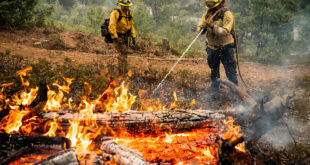"We realize that water is the limiting factor here and we stretch every drop as far as we possibly can, through the use of technology", says Mark Borba.
Borba has been farming almonds in the central valley since 2004. He says that two years ago they stopped receiving water from the state. Since then he’s installed his own wells to be more efficient.
He says, "we’ve kind of taken that efficiency to the limit, but there are other ways of scheduling irrigations, flowing, we talked about using drone technology to measure water stress from the air".
The almond board is donating $ 2.5 million dollars towards research. Farm bureau officials say this could affect work being done here in Fresno county.
Gurreet Brar with the University of California Cooperative Extension says, "we are increasingly faces more and more difficult situations and one for example is water availability and the other is salinity and pest disease pressure, there are a lot of challenges ahead".
Right now the central valley produces 100% of almond produce here in the U.S. About 1.9 billion pounds worth of the little nuts. This money would partially go towards coming up with more efficient for almonds to grow while using less water.
"We need to share responsibility when it comes to using our natural resources, while at the same time trying to get to optimum production levels", says Brar.
Borba says he’s got about 2,000 thousand acres producing right now and that the only way to continue, is with water.
"When consumers walk down the grocery aisle and they pickup a can of almonds, or a pound of tomatoes, or a head of lettuce, they are voting to use that water and consume that food", says Borba.
About 70% percent of that produce is exported and about 30% percent is kept and consumed here in the United States.
 Mariposa Fire Mountain Community Fire Information
Mariposa Fire Mountain Community Fire Information

Wanna Comment?